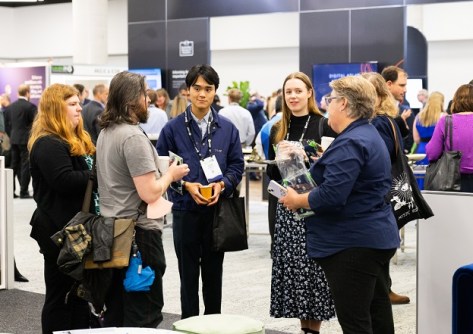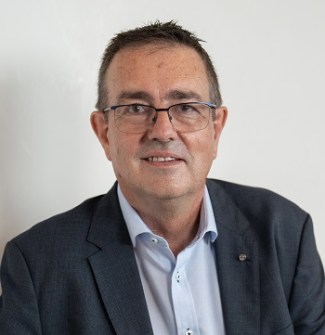
Australian expertise will be on show during the FIG Working Week 2025 / Locate25 geospatial conference next month.
By Jonathan Nally
The biggest geospatial conference to be held in Australia in more than a decade is now just days away, as approximately 1,500 people from around the nation and across the globe prepare to descend upon Brisbane for the combined FIG Working Week 2025 / Locate25 event.
Locate is well known to Australasian audiences as the annual conference for the geospatial community, but the FIG Working Week might not be as familiar. It is an annual conference that brings together the world’s surveying community to discuss issues and set the agenda for progressing the field.
Earlier this month, we spoke with the combined conferences’ program chair, Peter James, to get his views on why the upcoming event falls into the ‘do not miss’ category. Now, on these pages, we hear from the events’ convenor, Steve Jacoby, whose day job is Executive Director, Spatial Information | Georesources, in the Queensland Department of Natural Resources and Mines, Manufacturing and Regional and Rural Development.

We asked Jacoby about why Australian and international geospatial professionals should attend the joint conference, and what he personally hopes to learn from the experience.
Why is it important for Australia to be hosting the FIG Working Week?
In Australia’s bid to host FIG’s Working Week we stressed it was not just about holding another conference — it’s about seeking to leverage our country’s unique strengths to drive global advancements in surveying and spatial sciences. By hosting the event, Australia (and Brisbane in particular) will present a ‘living lab’ environment where innovative, transdisciplinary approaches are showcased through major infrastructure projects, cutting‐edge digital initiatives, and a strong local industry network.
What sort of synergies will the combined events bring to the field?
I was fortunate to attend FIG Sydney in 2010, only the second time FIG has been held in Australia, and it was fascinating to see firsthand the different perspectives and approaches that different geospatial professionals from around the world bring to bear on a diverse range of challenges and problems. Whilst Locate has delivered an outstanding national conference for many years now, I think the combined FIG/Locate conference will elevate the experience for delegates to the next level.
Which program topics stand out to you?
Natural disasters, particularly flooding, presents as a major challenge for much of Australia and especially Queensland (as we’ve seen again this storm season). I’m particularly interested in seeing how new developments in data and technologies such as LiDAR and radar can be applied to better plan, respond and recovery from natural disasters.
We are also just seven years out from the Olympic and Para-Olympic Games being hosted in Brisbane and South-East Queensland, so it’s great to see such a continued interest in the development and growth of digital twin technologies, notably to support better infrastructure planning and execution. Of course, while the Games are a focus for our State, we also live in the fastest growing region in Australia and the application of geospatial data and digital twins will be critical to manage these on-going pressures.
What do you think Australian geospatial professionals will be able to learn from their international counterparts?
Too often I think we tend to take a blank sheet of paper and start afresh when tackling challenges. I’m reminded that Australia is responsible for only 3 to 4% of global research — which has us punching well above our weight given we have only 0.3% of the world’s population — but that also means that up to 97% of global research happens elsewhere.

FIG Working Week brings together global leaders in our profession from over 100 countries in a very collaborative and accessible format that provides numerous opportunities for local professionals to take a step back and see how others have tackled similar issues and try and learn from these international experiences. Come to the conference with a curious mind and look for how others have tackled similar issues to those you are currently faced with or working on, and I think you’ll get a lot out of this extraordinary event.
Similarly, what will our overseas colleagues will be able to learn from Australia?
That will be a great exit poll question for our FIG delegates — we’ll ask them and report back! What I think they’ll find from their visit to Australia, apart from a renewed appreciation of distance and vast landscapes, is that Australian geospatial professionals are highly skilled, versatile problem solvers, keen to learn and share their knowledge and experiences. Our international colleagues are also likely to learn some new Australian words!
What are you most looking forward to?
I am very much looking forward to meeting our FIG colleagues face-to-face, many of whom we have been working with over many years and months in the lead up to Brisbane FIG. I have been privy to the development of an extraordinary program with a wealth of great plenary speakers and more than 500 papers and abstracts submitted. I can’t wait to see how it all comes together in what is no doubt going to be a fantastic technical program in particular.
Are there any Brisbane-specific aspects for attendees to look forward to?
It’s a given that all the plenaries will be ‘must attend’ sessions and the technical sessions will be of a very high calibre, requiring some difficult choices to be made by delegates on which ones to attend. But I think it’s worth highlighting the conference venue (the Brisbane Convention and Entertainment Centre), which is one of the best in the country and which will enable delegates to conveniently jump between parallel sessions to get the most out the program for them.
But it will also be the first time that many visitors get to experience the recently opened Queens Wharf development (on the city side of the river opposite Southbank and the convention centre). This now provides direct pedestrian access and great connectivity between our venues. For those who haven’t been to Brisbane for a year or two, I think they’ll be amazed at the transformation. And the local organising committee is keen to help showcase the city with conference events, social dinners and technical tours taking place in key locations, all now just a short walk from the Convention Centre.
Give us your strongest sales pitch — why should people attend the event?
A world class conference destination, a once in a generation opportunity to attend the FIG Working Week plus Locate 25 on home shores, an unparalleled opportunity for knowledge exchange and learning whilst showcasing Australia’s expertise and capabilities to the world — where else would you want to be?
Is there anything else you’d like to add?
I’ve had many questions about the weather in Brisbane during April. The local organising committee can formally report that it will be beautiful one day, perfect the next. I’m very much looking forward to welcoming delegates to Brisbane for this very special event.






